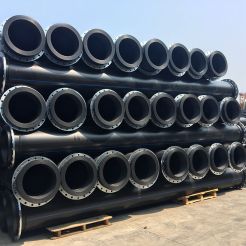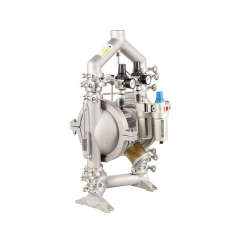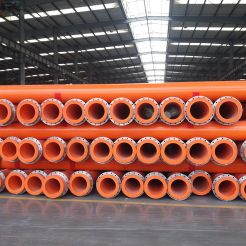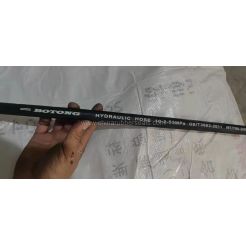Cation Exchange Resin Equivalent to Purolite C100E
Strong Acid Cation Exchange Resin crosslinking 7% in sodium form.Equivalent to Purolite C100E. It is amber in color and made from standard cross-linked gel.It is optimized for regeneration efficiency and high capacity. It is intended for residential water softening of waters that do not contain significant chlorine residual and where potable water certification is required.
Product Description
Strong Acid Cation Exchange Resin crosslinking 7% in sodium form. Equivalent to Purolite C100E.It is amber in color and made from standard cross-linked gel.It is optimized for regeneration efficiency and high capacity. that do not contain significant chlorine residual and where potable water certification is required.
Cation exchange resin is a type of polymeric resin that is used extensively in water treatment processes for the removal of ions and impurities. This type of resin has been used since the early 1960's to remove hardness-causing ions such as calcium and magnesium and to soften water. It is also used to reduce high levels of iron, sodium, and other contaminants found in untreated water. Cation exchange resin is typically made up of polystyrene beads that have a high degree of ion exchange capability. Ion exchange works by exchanging a positively charged ion, such as calcium, with a negatively-charged ion, such as sodium, which allows the calcium and other materials to be filtered out, while the sodium remains in the water.
Cation exchange resins come in different grades and sizes to meet the demands of various water treatment applications. The most common type of cation exchange resin is a sodium form of the resin, which is used in water softening applications because it is capable of exchanging hard ions like calcium and magnesium for less hard ions such as sodium, which is less likely to form scale and leave behind residue. This helps to reduce build-up and consequently improve the efficacy of water softening processes.
Cation exchange resin also has other important water treatment applications. For instance, it can be used in desalination plants to remove minerals from seawater, in wastewater treatment plants to remove toxins such as mercury, lead and other heavy metals, and in drinking water treatment plants to remove arsenic and other contaminants. In addition, it can be used to reduce levels of sodium, potassium, nitrates, and other ions, helping to reduce the overall hardness of a water source.
In water treatment applications, the cation exchange resin is usually housed in a tank with a service valve on the bottom so that the water can flow in and out of the device during regeneration. During the regeneration process, a solution of sodium chloride is added to the tank, causing the sodium ions to exchange with the harder ions inside the resin. The solution then needs to be removed from the tank and replaced with fresh water to flush out the contaminants. The process needs to be repeated periodically to clean out the resin and maintain its effectiveness.
Cation exchange resin is a very useful tool for water treatment professionals, as it can help to reduce the hardness and reduce levels of unwanted contaminants from a water source. With the right maintenance and care, it can last for many years, making it an invaluable part of any water treatment system.
|
Appearance |
Pale yellow clear spherical beads |
|
Polymer Structure |
Gel polystyrene crosslinked with divinylbenzene |
|
Functional Group |
-SO3H |
|
Ionic Form as shipped |
Na+ |
|
Weight Exchange Capacity |
≥4.5mmol/g Dry |
|
Volume Exchange Capacity |
≥1.9mmol/ml |
|
Specific Gravity |
1.24~1.28g/ml |
|
Shipping Weight |
0.77~0.87g/ml |
|
Moisture Retention |
45%~50% |
|
Particle Size Range |
0.315~1.25 mm |
|
Reversible Swelling |
Na+ → Ca+ 5-3% |
|
Temperate Limit |
H100℃,Na120℃ |
|
Sphere rate after abrasion |
≥95% |
Applications:
1) Water treatment
Ion-exchange resins are in great demand in the field of water treatment, accounting for about 90% of the output of ion-exchange resins, which are used for the removal of various anions in water. The largest consumption of ion exchange resin is used in the pure water treatment of thermal power plants, followed by atomic energy, semiconductor and electronic industries.
2) The food industry
Ion exchange resin can be used in sugar, monosodium glutamate, wine refining, biological products and other industrial devices. For example, high fructose syrup is produced by extracting starch from corn, and then hydrolyzing to produce glucose and fructose. After ion exchange treatment, high fructose syrup can be produced. The consumption of ion exchange resins in the food industry is second only to that of water treatment.
3) The pharmaceutical industry
Ion exchange resins for pharmaceutical industry play an important role in the development of new generation of antimicrobials and the quality improvement of the original antimicrobials. The successful development of streptomycin is a prominent example. In recent years, some researches have been made on the commission of traditional Chinese medicine.
Packaging Details & Delivery
a. PE bag (25liters) with pallet
b. PE valve bag (25liters) with pallet
c. Super sack / big bag (1200liters ) with pallet
d. Woven bag lined with plastic bag(25/20kgs)
e. According to users' requirements
Delivery time: Within two weeks after we receive the deposit.
Please pay attention to the followings :
1. Generally, 1x20FCLcontainer can hold 24000 liters, with pallet (48bags/pallet total 20pallets)
2. 1x20FCL containercan hold max 25000 liters, with pallet (50bags/pallet total 20pallets)
3. 1x20FCL container can hold max 30000 liters, without pallet

Can be used together with Anion exchange resin:
Email: info@Hailanresin.com
Mob.: +86 166 6392 6123
WeChat: +86 166 6392 6123
Whatsapp: +8616663926123
Add.: Henan Province Hebi City Industrial Park










